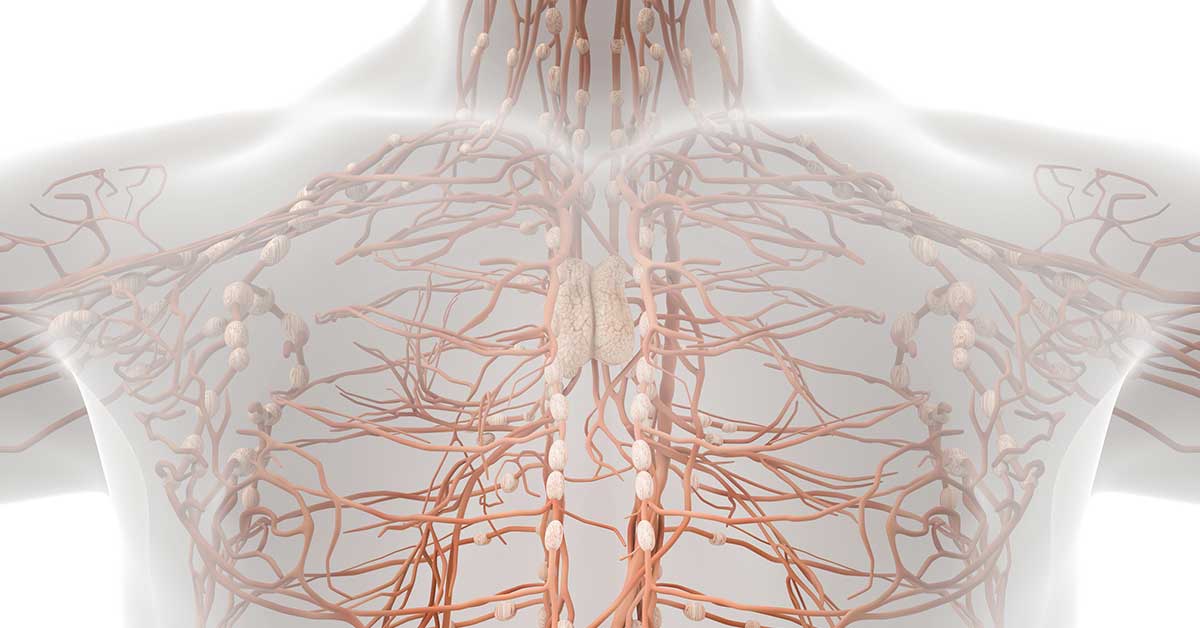
Lymph Nodes and Cancer—Common Questions Answered
-
What are lymph nodes—and what is their role in the spread of cancer? Knowing how the two are connected can help patients and their loved ones understand more about their diagnosis and treatment options. Here, Jeffrey Farma, MD, FACS, a surgical oncologist at Fox Chase Cancer Center, gives an overview of the basics.
What role do lymph nodes play in the body?
The body has a network of lymphatic channels and lymph nodes that act as a filtration system for fluids, waste, and germs. The vessels are like a highway that circulates lymph—a clear, watery fluid that brings nutrients to cells. The nodes are like hubs or stops along the highway that detoxify the lymph by fighting off harmful substances. As an integral part of the immune system, lymph nodes play a large role in fighting off infection and disease. There are thousands of lymph nodes throughout the body that are found clustered together, connected by lymphatic vessels throughout the body, in areas such as the groin, underarm (axilla), chest, abdomen, etc.
Why do lymph nodes sometimes swell?
Lymph nodes can swell when they’re trying to filter out harmful substances from an injury, infection, or cancer. Even something as simple as a cold or a bug bite can cause lymph nodes to enlarge. That’s important to keep in mind because, even though cancer can cause lymph nodes to swell, it’s not the most common cause of enlarged nodes.
How does cancer end up in lymph nodes?
Cancer can start in the lymph nodes, like in the case of lymphoma, but it can also spread to lymph nodes from somewhere else in the body. When cancer cells break away from a tumor, they can travel through the lymphatic system and into lymph nodes or through the blood stream and invade tissues and organs in another area of the body. This is called metastasis.
How is cancer in lymph nodes diagnosed?
When nodes are enlarged, a doctor may opt to perform a biopsy in which just a sample of the node is removed for testing. A pathologist will then look for cancerous cells within that lymph node.
Cancerous nodes can also be found when a patient undergoes surgery to have all or part of a tumor removed. During the procedure, a doctor might remove one or more nearby lymph nodes. The nodes are then examined to see if they’re cancerous. One technique to evaluate lymph nodes is called a sentinel node biopsy. This is commonly used in breast cancer and melanoma.
How is treatment affected if cancer is in the lymph nodes?
It’s different for different patients. Cancers that have moved into the lymph nodes tend to be more advanced. Often, the risk of recurrence is higher in these patients than those without lymph node involvement. The treatment options may include removal of the lymph nodes in this area, or additional treatments such as immunotherapy, chemotherapy, and/or radiation.
Are there any risks to having cancerous lymph nodes removed?
Removing cancerous lymph nodes can help keep a cancer from spreading further or coming back. But it can sometimes result in lymphedema, a condition where lymph fluid backs up in the part of the body where a node used to be. Lymphedema can cause swelling and nerve discomfort or dysfunction, but the good news is that lymphedema can often be managed or even cured. Your doctor can help you weigh the benefits and risks of having cancerous nodes removed.
Everyone’s cancer is different and when there is involvement in the lymph nodes, your doctor will take this into account when presenting you with treatment options.
